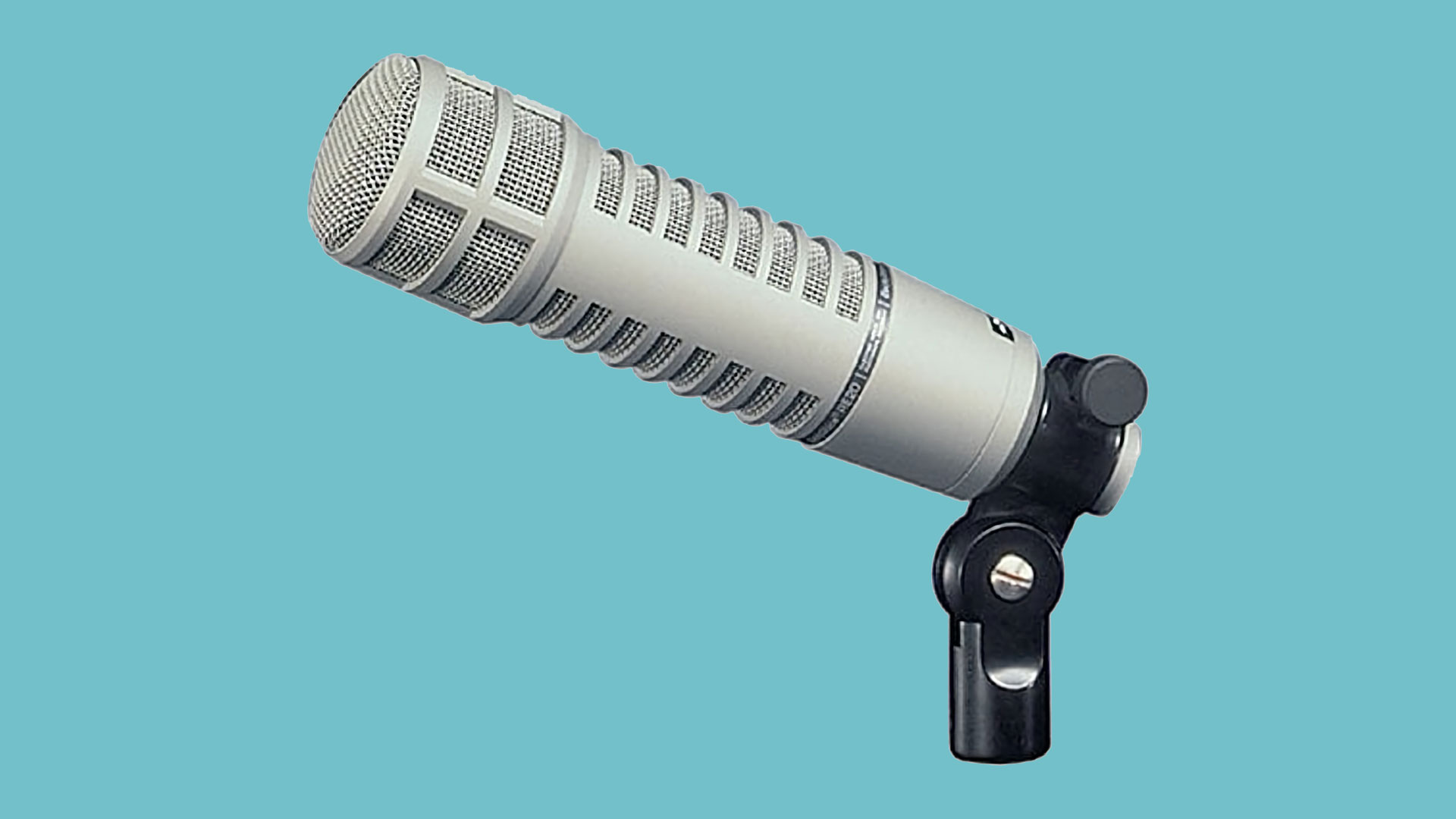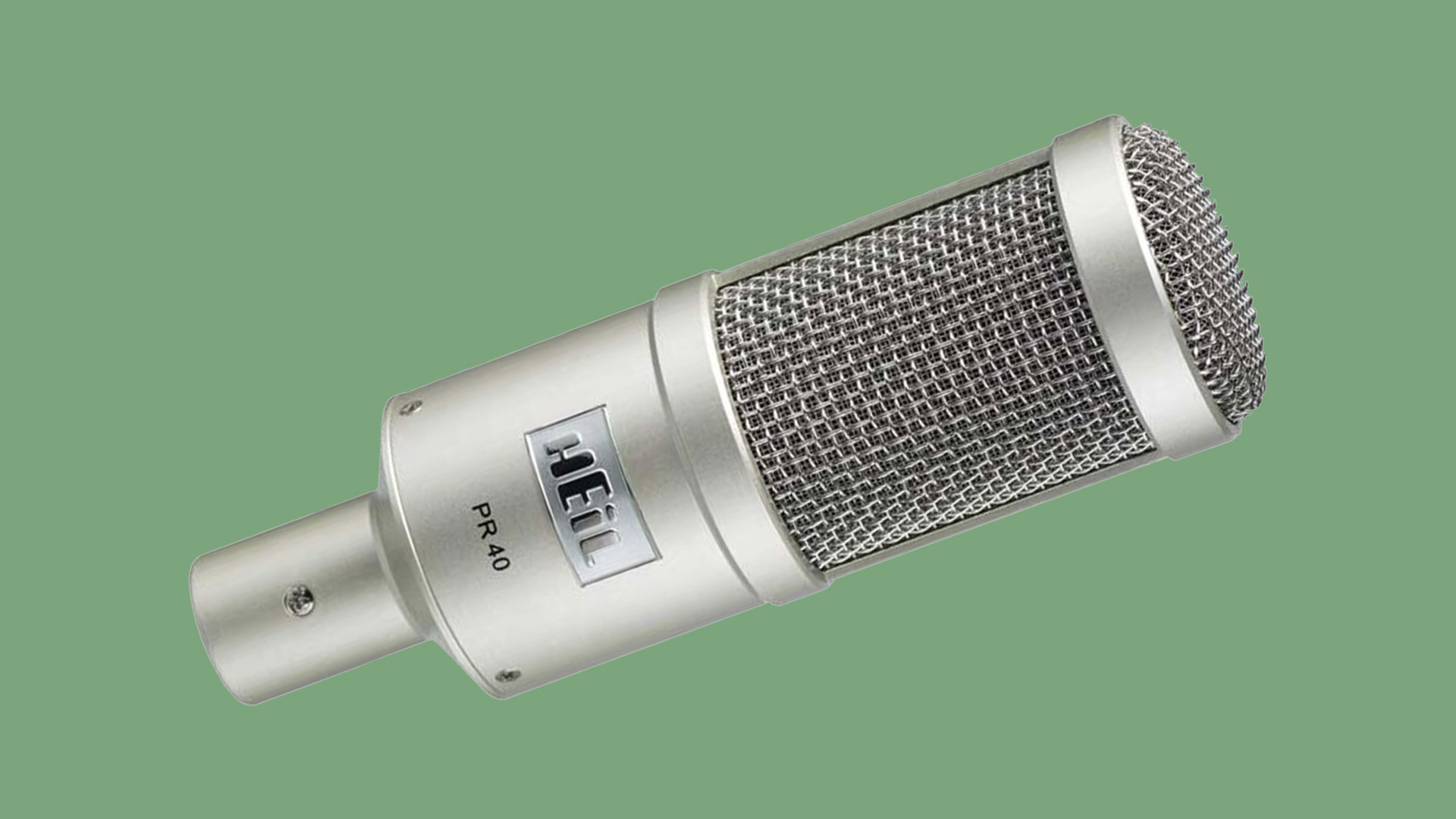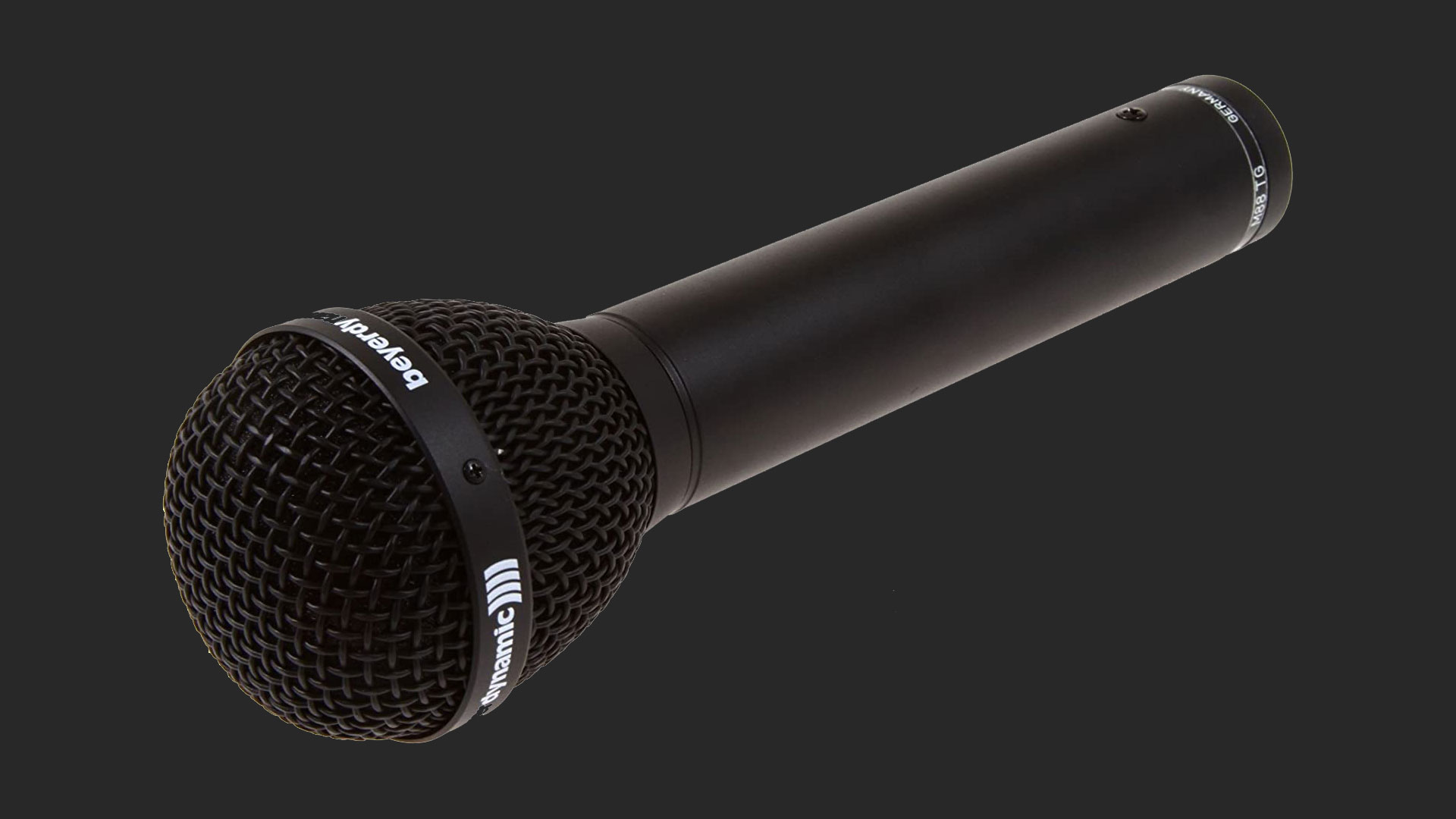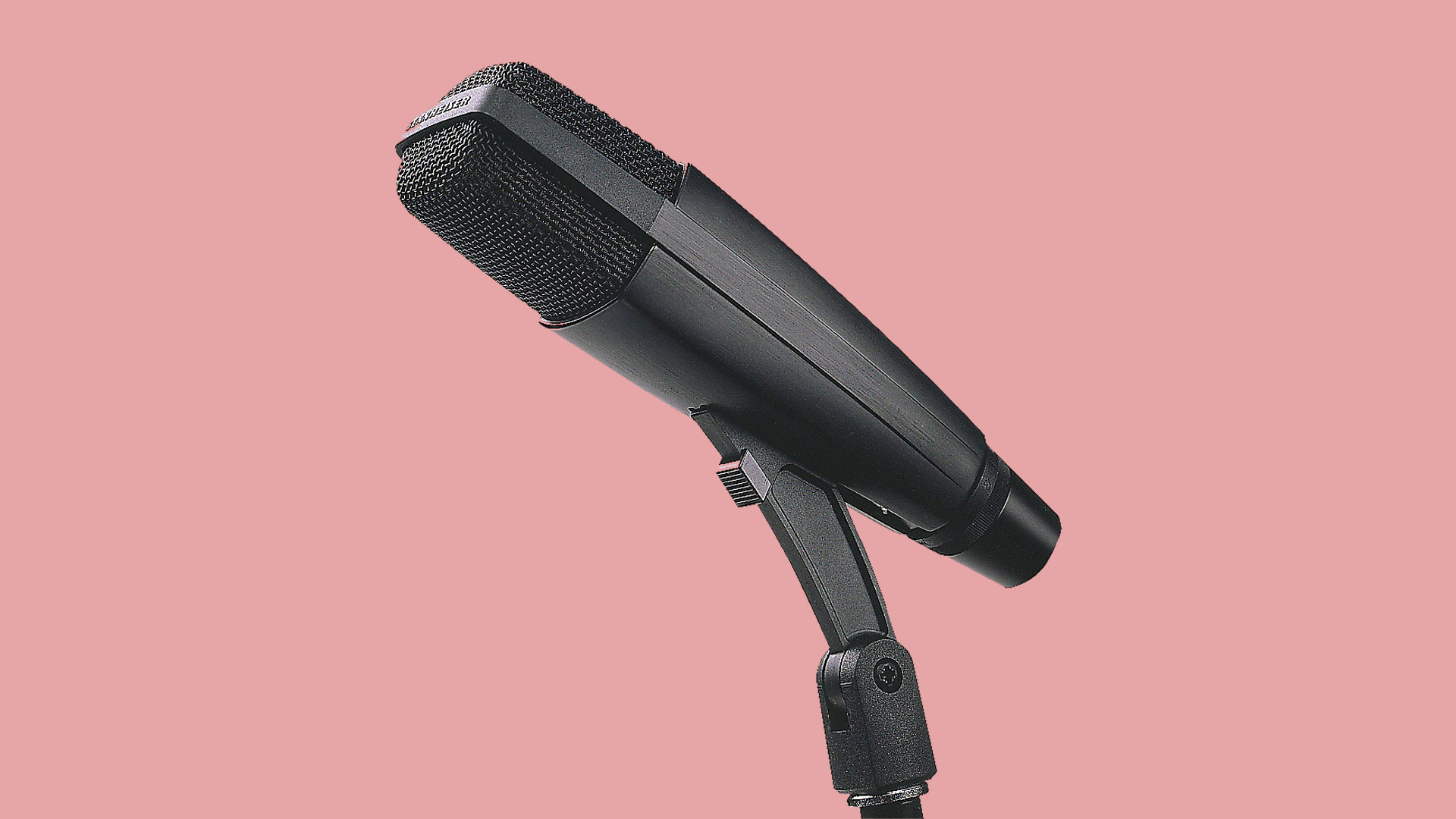While recording bass direct into a mixer, preamp, or audio interface will almost always be the cleanest way to record yourself, there are many times you’ll want to get the sound of the bass amp and cabinet you’re using. Maybe you like the particular sound of the cabinet, or you’re using effects that rely on sound moving through air, such as feedback. Whatever the reason, it’s important to get a solid mic that will capture your ideas as accurately as possible. In this post, we’ll share our top dynamic microphone recommendations for recording bass amps.
Electro-Voice RE-20
The Electro-Voice RE-20 is an industry standard microphone for recording low-frequency instruments. The microphone’s large diaphragm design is best for recording the low frequencies bass rigs reproduce. All large diaphragm microphones exhibit some degree of the proximity effect – the microphone’s response to low frequencies increases as the sound source gets closed. The RE-20, however, does not have much of a proximity effect.

The Electro-Voice RE-20 is popular for a variety of recording use cases.
The RE-20’s lack of a strong proximity effect is very important for recording bass amps. The microphone’s even frequency response gives it a mirror-like quality when recording. In other words, what you hear is what you get. Like most dynamic microphones, the Electro-Voice RE-20 is exceptionally durable and will last decades with proper care.
Heil PR 40
The Heil PR 40 is a large-diaphragm dynamic microphone that features an expansive frequency response. The PR 40 is capable of recording sound sources down to 28Hz. The microphone also has a second integrated metal screen to reduce the effects of pops and plosives.

The Heil PR 40 is a popular microphone for recording bass.
The Heil PR 40 also has a strong high frequency response that is ideal for capturing the effects of the “presence” known on some bass amps and pedals. The high frequency response is great for effects that have a wide frequency spectrum like fuzz and distortion. The Heil PR 40 is also a great choice for recording wide-spectrum synth sounds or noise effects through a bass cabinet.
It should be noted that this mic picks up at its end (the right-most part of the picture above) and not at its “front”, like an AKG 414.
Beyerdynamic M88 TG
The Beyerdynamic M88 TG comes in a few different variations – some modern and some not. This post refers to the M88 TG model, which comes with a strong black mesh for added durability.

The Beyerdynamic M88 is great for handling high-SPL sources.
The M88 is known for its high SPL handling and even frequency response up to 20kHz, which meakes it ideal for close-proximity bass amp recording. The Beyerdynamic M88’s lack of a proximity effect is similar to the Electro-Voice RE-20’s frequency response. The microphone’s hypercardiod design allows for a focused sensitivity field with strong off-axis rejection.
Sennheiser MD 421-II
Similar to the Beyerdynamic M88, the Sennheiser MD 421-II also has multiple variations. The differences between the models come down to connector components, including XLR wiring. For this post, we’ll refer to the MD 421-II.

The MD 421-II is a very popular microphone for low-frequency instruments. The microphone has a mostly-even frequency response with a boost in the midrange. The MD 421-II also comes with a bass rolloff switch with a number of options.
Conclusion
For recording bass amps, our microphone recommendations are the Electro-Voice RE-20, Heil PR 40, Beyerdynamic M88 TG, and Sennheiser MD 421-II.
It may seem odd to not see the Shure SM57 on this list. While the Shure SM57 is great on a wide range of applications and will work on bass amps in a pinch, it is not specifically designed for that use case. That’s also why we didn’t include known kick drum microphones. Most kick drum microphones have a limited frequency response, and using them for bass is not ideal.
If you have any questions or comments about our microphone recommendations, feel free to contact me on Twitter or send me an email.